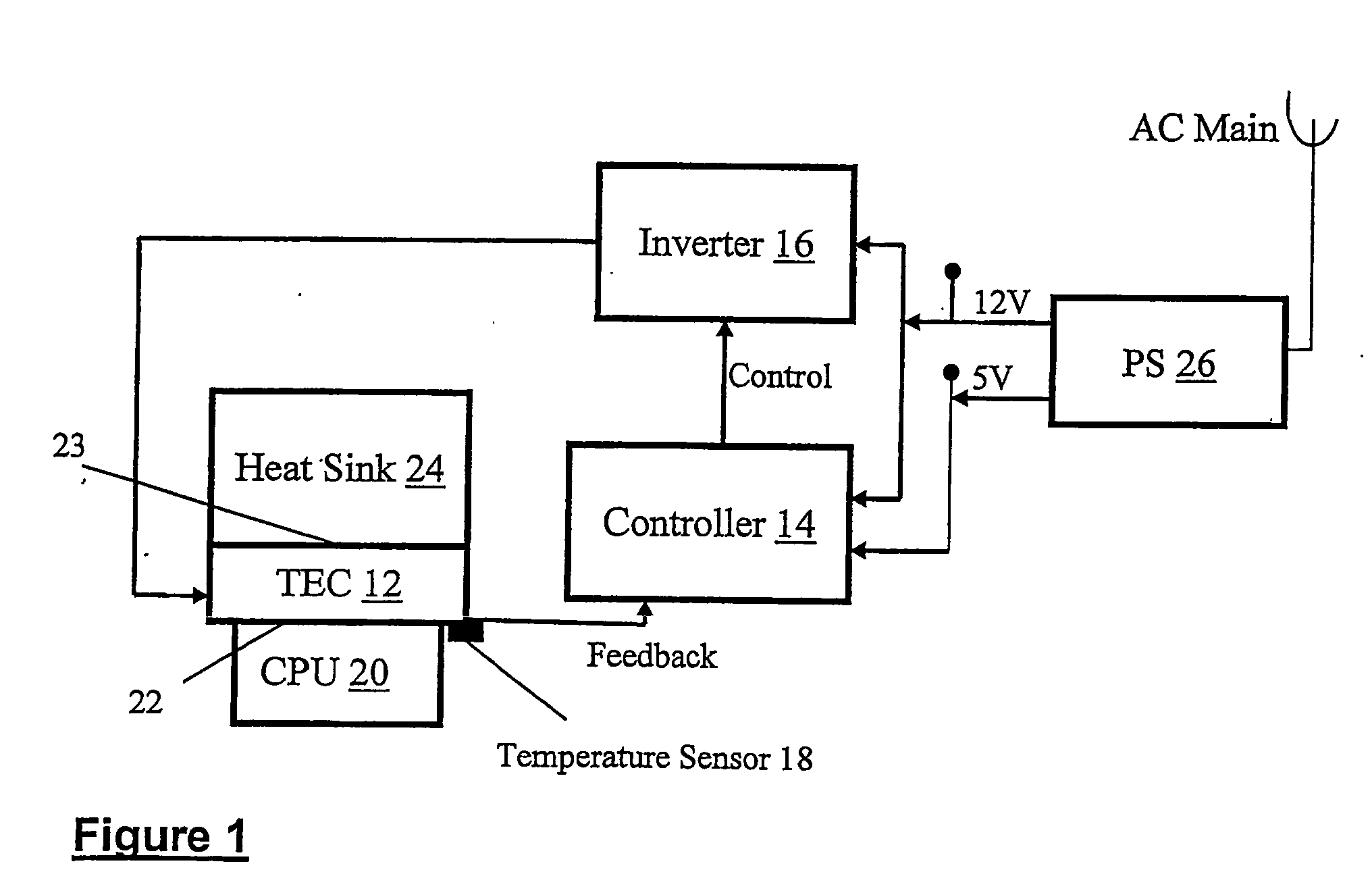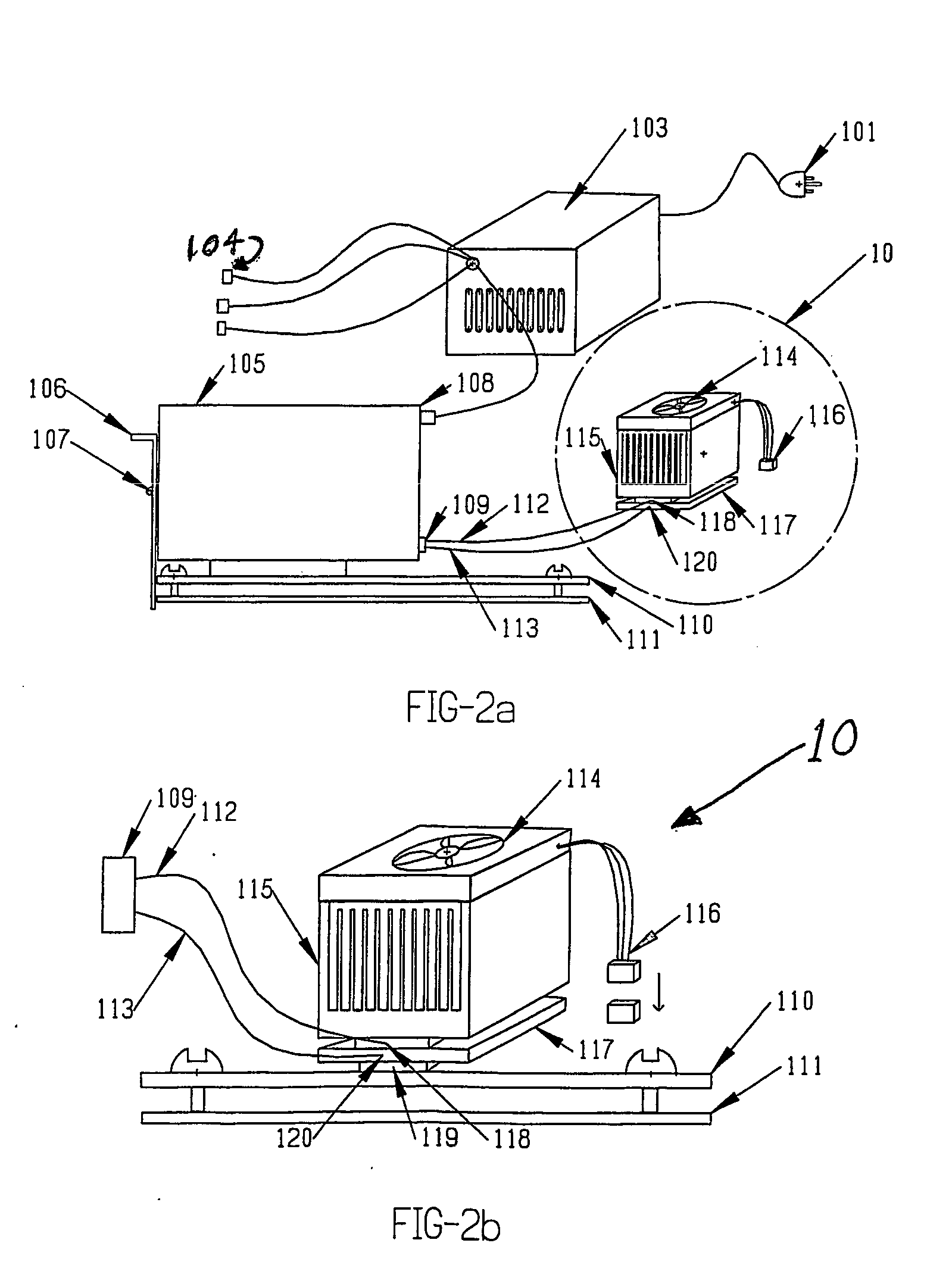Active cooling system for cpu
a cooling system and active technology, applied in the direction of electrical apparatus casings/cabinets/drawers, semiconductor/solid-state device details, instruments, etc., can solve the problems of processor overheating, insufficient cooling of computer processors, and increasing switching speeds
- Summary
- Abstract
- Description
- Claims
- Application Information
AI Technical Summary
Benefits of technology
Problems solved by technology
Method used
Image
Examples
second embodiment
[0048] With reference now to FIGS. 3a and 3b, there is shown the parts of the present invention: a Cool Card 220 having the form factor of being mounted on the TEC / HEAT sink assembly 200. Power cord 201 is connected to the electrical mains, providing power to the computer power supply 203. One of the standard output connectors 208 of the computer power supply 203 is connected to the Cool Card 220 mounted on the side of the TEC 217 / heat sink 215 assembly. The cool card 220 is mounted onto the heat sink 215, but separated therefrom by spacers 223, and is fastened in place with appropriate fastening means, such as screws 222 for example. A blue indicator LED 207 is mounted onto the cool card 220. The controlled-power output of the Cool Card is supplied at output connector 209 via wires 212 to the TEC element 218. The temperature sensor 224 is connected via wire 213 to connector 209. The cold side of the TEC element 218 is attached to the cold plate 217, which is typically aluminum, cop...
third embodiment
[0049]FIGS. 4a and 4b show the present invention, wherein the Cool Card has the form factor of being mounted inside a modified computer power supply.
[0050] Here, power cord 331 is connected to the electrical mains, providing power to the computer power supply 303, and the Cool Card 340 is mounted inside the power supply 303, and receives 12 V DC and 5 V DC from the power supply board via wire 337. Preferably, a blue indicator LED 336 is mounted on the outside of the power supply 303 and is connected to the Cool Card 340 via wire 343. The controlled-power output of the Cool Card is supplied at output connector 309 via wires 338 to connector 335, located on the side of the power supply facing the interior of the computer.
[0051] The connector 335 may be coupled via connector 109 (FIG. 2), supplying power for the TEC 118 (FIG. 2) and further coupled via wire 113 (FIG. 2) to temperature sensor 120 (FIG. 2) located on cold plate 117 (FIG. 2). The cold side of the TEC element 118, (FIG. 2...
PUM
 Login to View More
Login to View More Abstract
Description
Claims
Application Information
 Login to View More
Login to View More - R&D
- Intellectual Property
- Life Sciences
- Materials
- Tech Scout
- Unparalleled Data Quality
- Higher Quality Content
- 60% Fewer Hallucinations
Browse by: Latest US Patents, China's latest patents, Technical Efficacy Thesaurus, Application Domain, Technology Topic, Popular Technical Reports.
© 2025 PatSnap. All rights reserved.Legal|Privacy policy|Modern Slavery Act Transparency Statement|Sitemap|About US| Contact US: help@patsnap.com



